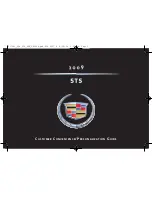
Blue Indicator Lights
— High Beam Indicator Light
This indicator light will illuminate to indicate that
the high beam headlights are on
.
With the low
beams activated, push the multifunction lever
forward (toward the front of the vehicle) to turn
on the high beams
.
Pull the multifunction lever
rearward (toward the rear of the vehicle) to turn
off the high beams
.
If the high beams are off, pull
the lever toward you for a temporary high beam
on, "flash to pass" scenario
.
ONBOARD DIAGNOSTIC
SYSTEM — OBD II
Your vehicle is equipped with a sophisticated
Onboard Diagnostic system called OBD II
.
This
system monitors the performance of the emis-
sions, engine, and transmission control systems
.
When these systems are operating properly, your
vehicle will provide excellent performance and
fuel economy, as well as engine emissions well
within current government regulations
.
If any of these systems require service, the OBD
II system will turn on the Malfunction Indicator
Light (MIL)
.
It will also store diagnostic codes and
other information to assist your service technician
in making repairs
.
Although your vehicle will
usually be drivable and not need towing, see an
authorized dealer for service as soon as possible
.
CAUTION!
• Prolonged driving with the MIL on could cause
further damage to the emission control sys-
tem
.
It could also affect fuel economy and
driveability
.
The vehicle must be serviced be-
fore any emissions tests can be performed
.
• If the MIL is flashing while the vehicle is
running, severe catalytic converter damage
and power loss will soon occur
.
Immediate
service is required
.
Onboard Diagnostic System (OBD II)
Cybersecurity
Your vehicle is required to have an Onboard
Diagnostic system (OBD II) and a connection
port to allow access to information related to the
performance of your emissions controls
.
Autho-
rized service technicians may need to access this
information to assist with the diagnosis and ser-
vice of your vehicle and emissions system
.
WARNING!
• ONLY an authorized service technician
should connect equipment to the OBD II
connection port in order to read the VIN,
diagnose, or service your vehicle
.
• If unauthorized equipment is connected to
the OBD II connection port, such as a
driver-behavior tracking device, it may:
•
Be possible that vehicle systems, includ-
ing safety related systems, could be
impaired or a loss of vehicle control
could occur that may result in an
accident involving serious injury or
death
.
•
Access, or allow others to access, infor-
mation stored in your vehicle systems,
including personal information
.
For further information, refer to “Cybersecurity”
in “Multimedia” in your Owner’s Manual
.
47
Summary of Contents for 500 L 2019
Page 24: ...Automatic Climate Control Overview Automatic Climate Controls GETTING TO KNOW YOUR VEHICLE 22 ...
Page 120: ...SERVICING AND MAINTENANCE 118 ...
Page 166: ...164 ...
Page 167: ...165 ...
Page 168: ...166 ...
Page 169: ...167 ...
Page 170: ...168 ...
















































